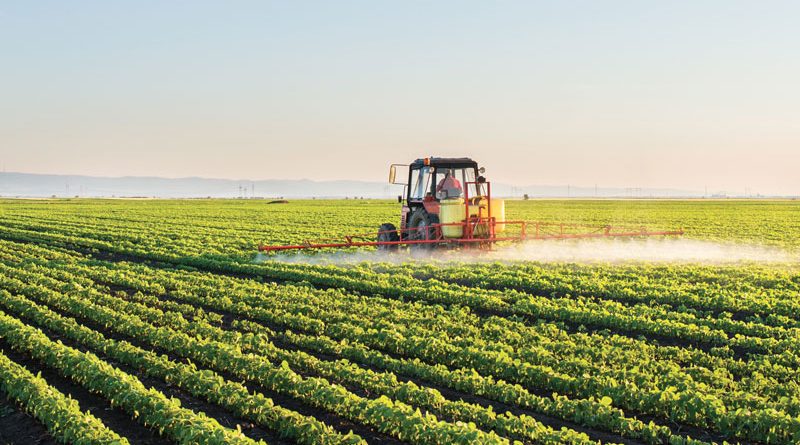Electronic Future for the Agricultural Sector
In agricultural sector, a lack of compatibility between proprietary solutions that often do not interact with each other, due to differences between manufacturers, is an obstacle. The latest electronics and apps generation can solve the problem. Parker explains how
by Ginevra Leonardi
On a daily basis, farmers work with tractors, implements and machines from various manufacturers. Such a variety of proprietary solutions means that many systems do not engage seamlessly or may not engage at all. This disunity is a sticking point that has meant each implement and tractor requires an individual terminal to allow data exchange and machine control.
The answer to the conundrum lies with innovative electronics. Newly developed systems are changing the agricultural landscape, making it possible to achieve higher levels of productivity with less operator fatigue.
In short, technology is changing the way that humans operate agricultural machines, as computer monitoring systems, GPS locators, and self-steer programs allow the most advanced tractors and implements to be more precise and less wasteful in the use of fuel, seed or fertilizer for example. With electronics, it is possible to control and monitor practically every stage of the agricultural process. All signals, such as speed, position, power take-off and RPM, are available in standardised format for each implement.
The benefits of ISOBUS protocol and app-based control
In its basic form, the technology facilitating this capability is ISOBUS, an international communications protocol for the agricultural sector that in effect simplifies the concept through its plug and play functionality: only one terminal for a large selection of implements, regardless of the manufacturer. ISOBUS standardises the control settings, reduces downtime and minimises installation and interface problems. In addition, calibration is no longer necessary and user-friendliness is enhanced. The standardised plug makes it very easy to connect different components, while costs are reduced because it is only necessary to buy a single terminal. In turn, with fewer modules and interfaces, cab visibility is enhanced. A further benefit of ISOBUS is that it improves operating efficiency and optimises timings as data can be exchanged between the farm PC and the terminal. Technology of this type is essential for producing flawless documentation in modern, precision farming operations. A modern ISOBUS system comprises a multitude of components, including the tractor, terminal and implement. Taking this concept a step further the new Parker ISOBUS Suite apps enable the integration of ISOBUS functionalities into the machine HMI, via the app-based Pro Display product family. Using the apps, ISOBUS functions can be shown on the screen. Since the display offers full flexibility and can show comprehensive information – including machine data, notifications, camera monitors, PDFs and more – no separate ISOBUS display is required. In addition, thanks to split-screen functionality, customers can display the ISOBUS universal terminal alongside the rear-view camera or other functions; the screen can split both horizontally and vertically.
Expanding the functionality of a device with ease
In essence, an app is software that fulfils a function, but has nothing to do with the operating system. As a result, machine manufacturers can expand the functionality of a device with ease. HMI apps offer an advantage when trying to make mobile machines more efficient, when guaranteeing flexibility in terms of expanding functionalities, and when simplifying processes in the driver’s cab. For example, instrumentation apps that display speed, temperature and pressure facilitate the control of the mobile machine, while apps designed for automatic steering and self-levelling suspension contribute to increased core function efficiency; both in navigation and the adjustment of machine settings.
Less downtime is achieved by diagnostics apps for service code protocols, data capturing and analysis, GPS tracking and geo-fencing, as well as by apps that enable mobile phone hands-free functionality, driver logbooks, and operating behaviour tracking. To provide a degree of futureproofing, where needed, new apps can be installed via USB stick to upgrade already installed systems.
The facilitating technology
By utilising Parker’s UX Toolkit – an apps-based software development environment that can be used to develop HMI products for mobile machines and vehicles – and the split-screen functionality, manufacturers can display further machine data and camera monitors right next to the ISOBUS information. Breaking Parker’s ISOBUS Suite down into component parts, the app consists of three main elements: ISOBUS Universal Terminal (UT), Task Controller (TC) and File Server (FS). ISOBUS UT is based on ISO 11783-6 and is a standardised graphical user interface for controlling and displaying all ISOBUS implement devices. ISOBUS FS allocates disk space to the ISOBUS machine, for tasks such as data storage and data recovery. Additionally, data can be exchanged between the machine and back-office system using removable storage.
Finally, ISOBUS TC acts as the interface between the device control and farm management system, and is useful for working documentation and resource management.
Thanks to the geo-based ISOBUS TC, users can capture additional, location-based data. ISOBUS TC with section control covers crop protection sprayers, fertilizer spreaders and sowing machines.
Multi-function support
The UX Toolkit, together with the Pro Display family, also supports functions such as automatic steering, self-levelling suspension, weighing and camera system integration. Users can connect two analog cameras and up to 255 IP cameras via the Ethernet interface.
The robust displays with capacitive touchscreens are equipped with multiple communications and infotainment interfaces. WLAN and Bluetooth are also provided, as well as all necessary functions to manage audio functions.
Further benefits of integration include reduced operating complexity and less risk of errors, which in turn improve efficiency and ergonomics for users. In addition, the use of In-Plane Switching (IPS) technology results in clear images with great colour reproduction and wide viewing angles. The ISOBUS Suite from Parker has enabled the integration of ISOBUS functions into the app-based Pro Display family. As a result, it provides an example of an efficient app-based scenario for users of tractors, harvesters and other self-propelled agricultural machines.

